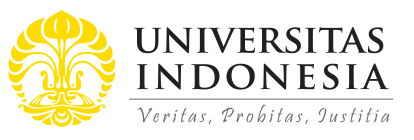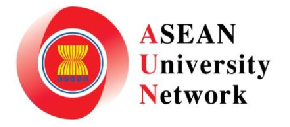
Abstract
Information Technology Needs in the current community are very high and very dynamics. This needs can be seen from the many aspects of community life that cannot be separated from the dependence on the use of ICTs. This dependency also occurs in the education environment, especially the environment of senior high school level education in DKI Jakarta. If schools can implement optimally this new type of learning, it’ll be possible there are no longer needed a separate type of national level test in Indonesia, question bank and teaching material can be share between schools in Indonesia, and learning can be done in wherever, whenever, and whoever want to study. This research activity was carried out derived from the results of direct observations, which had problems in the aspects of HR (teachers, students, and technical staffs), Technology Infrastructure, and leadership. This research was conducted using descriptive qualitative methods. The results showed that there were still many teachers who were not aware of the importance of LMS, so that the participation of teachers and students still used traditional methods. The student’s commitment has what commitment their teacher will give, if the teachers have not been committed to using LMS optimally, so will their students. LMS technical staffs themselves also face similar problems, where the direction of technical staffs implementing LMS depends on the direction of the leader.
References
Al-Adwan, A., & Smedley, J. (2013). Exploring students acceptance of e-learning using Technology Acceptance Model in Jordanian universities Amer Al-Adwan Applied Science University, Jordan. International Journal of Education and Development Using Information and Communication Technology, 9(2), 4–18. Retrieved from http://ijedict.dec.uwi.edu/include/getdoc.php?id=5522&article=1617&mode=pdf
Aparicio, M., Bacao, F., & Oliveira, T. (2016). An e-Learning Theoretical Framework An e-Learning Theoretical Framework. Journal of Educational Technology & Society, 19(January), 292–307.
Clark, R. C. (2016). E-Learning and the Science of Instruction: Proven Guidelines for Consumers and Designers of Multimedia Learning. New Jersey: John Wiley & Sons Publisher.
Clover, I. (2017). Advantages and Disadvantages of E-Learning Technique. Retrieved January 1, 2019, from Advantages and Disadvantages of E-Learning website: https://elearningindustry.com/advantages-and-disadvantages-of-elearning
Creswell, J. W. (2018). Research Design: Qualitative, Quantitative, and Mixed Methods Approaches. Washington DC: Sage Publisher.
Davis, G. B. (2006). Management Information System. New York: McGraw-Hill.
Dunleavy, P. (2006). Digital Era Governance: IT Corporations, the State, and eGovernment 1st Edition. In Whose Peace? Local Ownership and United Nations Peacekeeping (1st ed.). https://doi.org/10.1093/acprof
Erlinda, F. (2018). Kesiapan Sekolah SMAN 34 Jakarta dalam Penggunaan E-Learning. Goodwin, D. K. (2018). Leadership: In Turbulent Times. New York: Simon & Schuster.
Hari. (2018). Kesiapan Infrastruktur dalam Penggunaan E-Learning SMAN 34 Jakarta.
Hassanzadeh, A., Kanaani, F., & Elahi, S. (2012). A model for measuring e-learning systems success in universities. Expert Systems with Applications, 39(12), 10959–10966. https://doi.org/10.1016/j.eswa.2012.03.028
Keegan, D. (1988). On defining distance education. In Distance Education: International Perspectives. London: Routledge.
Kemendikbud. (2013). Permendikbud RI Nomor 109 Tahun 2013. Retrieved from https://www.unm.ac.id/files/surat/permen_tahun2013_nomor109.pdf
Kemendikbud. (2014). Permendikbud RI Nomor 114 Tahun 2014. Retrieved from https://luk.staff.ugm.ac.id/atur/Permendikbud144-2014UjianNasional.pdf
Kemendikbud. (2017). Permendikbud RI Nomor 3 Tahun 2017. Retrieved from http://simpuh.kemenag.go.id/regulasi/permendikbud_03_17.pdf
Loh, C., Wong, D., Quazi, A., Russel, P., & K. (2016). Re-examining students’ perception of e-learning: an Australian perspective. International Journal of Educational Management, 30(1).
Maxwell, J. C. (2013). The 5 Levels of Leadership: Proven Steps to Maximize Your Potential. New York: Center Street.
Moodle. (2017). Moodle Docs. Retrieved March 12, 2018, from https://docs.moodle.org/34/en/Main_page
N. K., Denzin & Lincoln, Y. S. (2005). The SAGE Handbook of Qualitative Research, Third Edition (3rd ed.). Washington DC: SAGE Publisher.
Najmul Islam, A. K. M. (2011). Students’ e-learning system usage outcomes: A study with a learning management system. IFIP Advances in Information and Communication Technology, 353, 255–268.
Nuechterlein, J. E. (2013). Digital Crossroads: Telecommunications Law and Policy in the Internet Age second Edition. Massachusetts: The MIT Press.
Ordonez, K. (2018). Association 4.0 – Positioning for Success in an Era of Disruption. Oregon: Luminare Press.
Paulsen, M. F. (1998). Online Education : Pedagogical , Administrative , and Technological Opportunities and Limitations. (October). Retrieved from http://www.ufrgs.br/niee/eventos/RIBIE/1998/pdf/conferencias/003_MORTEN.pdf
Power, M. (2008). The Emergence of a Blended Online Learning Environment. Journal of Online Learning and Teaching, 4(4), 503–514. Retrieved from http://anitacrawley.net/Resources/Articles/Power2008.pdf
Salmon, G. (2013). Etivities: The Key to Active Online Learning. London: Sterling.
Stoker, S. (2016). an Overview of the Global eLearning Market by Area. Retrieved March 12, 2018, from https://elearningbrothers.com/blog/overview-global-elearning-market-area/
Sugianti, J. (2018). Kesiapan Bagian Kurikulum dalam Penggunaan E-Learning SMAN 34 Jakarta.
Sun, P., Tsai, R. J., Finger, G., & Chen, Y. (2008). What drives a successful e-Learning ? An empirical investigation of the critical factors influencing learner satisfaction. Computers & Education, 50, 1183–1202. https://doi.org/10.1016/j.compedu.2006.11.007
Susanti, A. (2015). Banyak Kampus Melirik Metode E-Learning. Retrieved March 12, 2018, from https://news.okezone.com/read/2015/08/17/65/1197547/banyak-kampus-melirik-metode-e-learning
Recommended Citation
Anza, Fikri; Luthfi, Achmad; and Saragih, Arfah
(2019).
Introduction e-learning in educational sector case study Senior High School in DKI Jakarta.
ASEAN Journal of Community Engagement, 3(1).
Available at: https://doi.org/10.7454/ajce.v3i1.149







